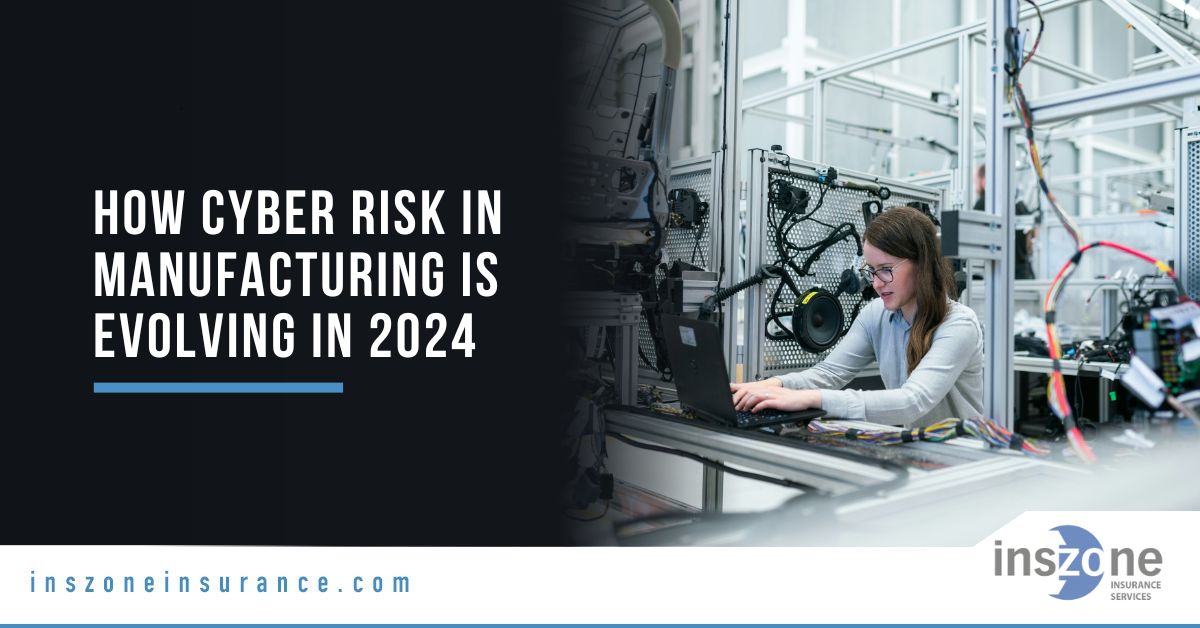The Expanding Role of IoT in Manufacturing
The industrial sector, particularly manufacturing, has increasingly incorporated the Internet of Things (IoT) into its operations. This integration enhances efficiency and production capabilities but also broadens the cyber risk landscape significantly. With a predicted increase to over 30 billion active IoT devices by 2025, the surface for potential cyber threats continues to expand dramatically (Industrial Cyber).
Emerging Cyber Risks in Manufacturing
As manufacturing processes become more connected through IoT, the distinction between operational technology (OT) and traditional IT security becomes blurred. This has introduced complex cyber risks that were previously confined to the realm of information technology. The integration of IoT in manufacturing processes extends cyber risk to all operational areas, including heavy machinery and production lines, making cyber threats a critical business concern (Deloitte United States).
Cybersecurity Trends and Predictions for 2024
In 2024, manufacturers are expected to face new challenges due to economic uncertainties, labor shortages, and the need for innovation in product development and emission reductions. To manage these challenges, there’s a strong focus on digital transformation strategies, including the adoption of smart factory technologies and the exploration of the industrial metaverse (Deloitte United States).
One significant trend is the increased use of generative AI, which is expected to drive cost reductions and improve labor productivity in the face of ongoing labor market challenges. These advancements, however, also bring new vulnerabilities, particularly in cybersecurity, where the protection of intellectual property and the management of third-party cyber risks become paramount (Deloitte United States).

Cyber Risk Management in Manufacturing
To safeguard against these evolving threats, manufacturers must adopt comprehensive cyber risk management strategies. This includes implementing frameworks like the Cybersecurity Maturity Model Certification (CMMC) to ensure proper security measures are in place. Additionally, manufacturers are turning to solutions such as financial Cyber Risk Quantification (CRQ) models, which help in assessing potential financial impacts of cyber threats and optimizing insurance coverages to better manage these risks (DATAVERSITY) (Deloitte United States).
The Role of Cyber Insurance
The role of cyber insurance is also evolving. Traditional cyber insurance policies are being reevaluated to cover the broader scope of risks presented by advanced manufacturing technologies. Manufacturers are considering self-insurance options to manage the high costs associated with cyber risks, driven by the unique challenges posed by the industry’s deep integration of interconnected digital technologies (DATAVERSITY).
Risk management insurance companies play a vital role in preventing and mitigating cyber risks, especially in the manufacturing sector in the US as of 2024. Here are some ways they can assist:
- Insight into Threats and Security Controls:
- As the cyber insurance market matures, both applicants and providers gain valuable insight into how threats manifest into claims. They understand the minimum security controls required to prevent and mitigate cyber risks1.
- Risk Assessment and Mitigation Strategies:
- Risk management companies collaborate with manufacturers to assess their unique cyber risks. They help identify vulnerabilities, evaluate potential threats, and recommend risk mitigation strategies.
- These strategies may include implementing robust firewalls, intrusion detection systems, regular security audits, and employee training on cybersecurity best practices.
- Cyber Insurance Policies:
- Risk management insurers offer tailored cyber insurance policies that cover various aspects of cyber risks. These policies can include:
- Data breach coverage: Protection against data breaches, including costs related to notification, legal expenses, and credit monitoring for affected individuals.
- Business interruption coverage: Compensation for lost revenue due to cyber incidents.
- Third-party liability coverage: Protection against claims from third parties affected by a cyber incident.
- Cyber extortion coverage: Coverage for ransomware attacks.
- Network security liability coverage: Protection against lawsuits related to security breaches.
- These policies help manufacturers transfer some of the financial risk associated with cyber events.
- Risk management insurers offer tailored cyber insurance policies that cover various aspects of cyber risks. These policies can include:
- Incident Response Planning:
- Risk management experts assist manufacturers in developing incident response plans. These plans outline steps to take in case of a cyber incident, including communication protocols, data recovery procedures, and legal compliance.
- Having a well-prepared incident response plan minimizes the impact of cyberattacks.
- Education and Training:
- Insurers provide educational resources and training sessions for manufacturers and their employees. These cover topics such as phishing awareness, secure password practices, and safe online behavior.
- Educated employees are better equipped to recognize and prevent cyber risks.
- Monitoring and Early Detection:
- Risk management companies help manufacturers set up continuous monitoring systems. These systems detect unusual network activity, unauthorized access, or potential threats.
- Early detection allows proactive responses to prevent or limit damage.
- Collaboration with Cybersecurity Experts:
- Insurers partner with cybersecurity consultants and specialists. These experts provide manufacturers with guidance on best practices, threat intelligence, and emerging risks.
- Collaborating with experts ensures manufacturers stay ahead of evolving cyber threats.
Remember that cyber risks are dynamic, and risk management strategies must adapt accordingly. Manufacturers should actively engage with insurers and leverage their expertise to safeguard their operations against cyber threats.

